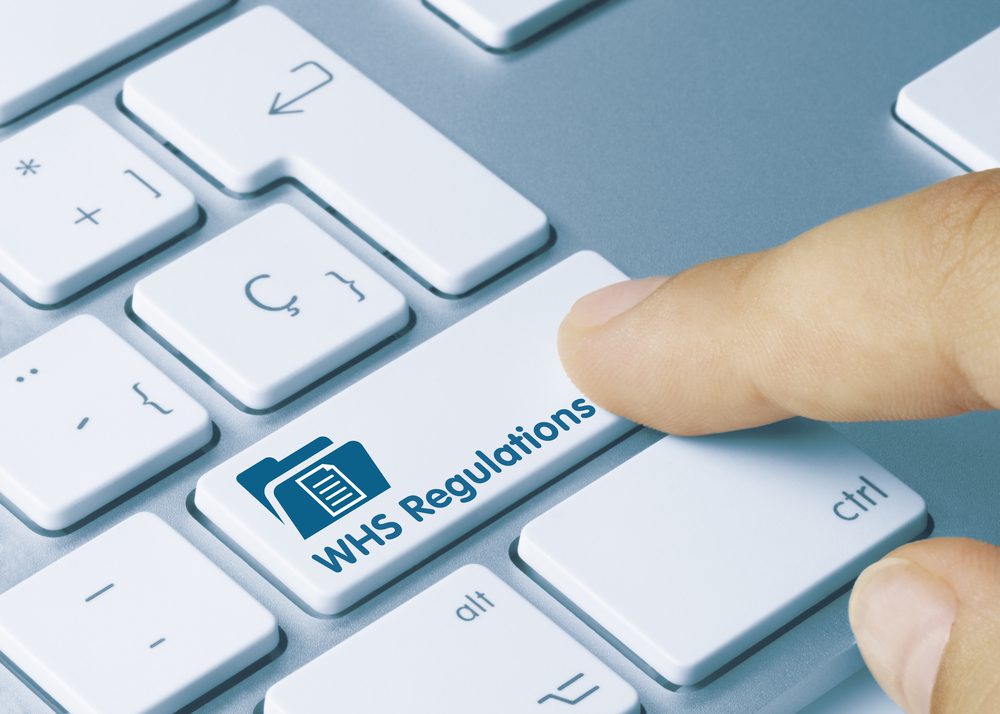Safety is a top priority in any workplace, so it’s important to understand the ins and outs of Workplace Health and Safety (WHS) policy in Australia. With WHS policies designed to protect everyone involved in the workplace – from employers to employees – understanding these regulations is essential for creating a safe working environment.
Navigating this complex landscape can be daunting, but with some simple steps, anyone can stay on top of their obligations under WHS legislation. From ensuring workers have access to PPE to managing risks inherent in specific workplaces or industries, there are plenty of ways to ensure compliance while also providing an enjoyable work setting for all.
The need for safety should never be overlooked – after all, we’re all part of this collective journey towards increased safety standards – so let’s take a look at how you can make sure your organisation stays compliant with the latest WHS rules.
Definition Of Whs
It’s no surprise that ‘work health safety’ (WHS) policies are the bane of many workers’ lives – but what exactly is WHS, and why should we care? From offices to factories, it seems like every workplace has strict rules about how people can work. But don’t be fooled; there’s a lot more to WHS than just bossing everyone around!
At its core, WHS refers to an overarching set of standards designed to protect employees from potential hazards in the workplace. This includes occupational health and safety regulations, such as ensuring proper ventilation or providing protective equipment when necessary. In addition, employers must also create written procedures outlining their approach to managing risks and responding to incidents if they occur.
Ultimately, having effective WHS systems in place is essential for any business – not only does it keep employees safe from harm, but it ensures that operations remain compliant with relevant laws. As such, properly understanding your organisation’s WHS policy will pay off in the long run by reducing costly legal issues and creating a safer working environment for all involved.
Legislative Requirements
With all the rules and regulations surrounding WHS, getting lost in a sea of compliance can be easy. Thankfully, understanding your organisation’s legislative requirements isn’t as hard as you might think! In Australia, workplace safety is strictly regulated by various WHS legislation covering everything from managing risks to responding appropriately when incidents arise.
These laws are designed to ensure that employers provide their workers with safe and healthy conditions, regardless of industry or occupation. As such, they set out certain standards which must be met for an organisation to remain compliant – things like conducting risk assessments and providing appropriate protective equipment.
Not only do these measures protect people on the job, but they also help businesses avoid costly legal issues down the road.
Ultimately, having a thorough understanding of relevant WHS legislation is essential for any business owner.
Not only will this make sure everyone stays safe while at work, but it will also give employees peace of mind knowing that their employer is following workplace standards correctly. Taking time to familiarise yourself with your organisation’s obligations under the law will pay off in spades later – both financially and ethically!
Key Elements Of Whs Policy
Have you ever wondered what the key elements of a WHS policy are and how they contribute to creating a safe and healthy workplace? A well-crafted WHS policy is essential for any organisation looking to ensure that their employees remain protected. It serves as both an instructional document for employers and workers alike and a legal tool in case of disputes or accidents.
When it comes to constructing your own WHS policy, several components should be taken into account:
- Content: Your WHS policy must contain detailed information about your company’s safety procedures and regulations – from outlining roles and responsibilities to providing specific instructions on conducting risk assessments. This content should also include identifying potential hazards, enforcing protective measures, providing emergency response plans, and more.
- Structure: The structure of your WHS policy can vary depending on the size of your organisation and its industry. However, regardless of this, there should always be clear sections with distinct titles so that all personnel understand where each rule pertains to them.
- Language: When writing out the details of your policy, make sure that the language used is simple yet effective. Avoid using jargon or technical terms wherever possible, as this could confuse readers – instead, keep things concise but informative at every turn.
Finally, when putting together your WHS policy guidelines, consult with experts if necessary – including legal professionals who may help review documents before they go public!
Doing so will not only give you peace of mind knowing that everything meets relevant standards, but it will also provide some extra protection against future issues down the line.
Strategies For Compliance
With all the components of a WHS policy in place, it’s time to consider how they can be effectively implemented. The strategies for compliance are just as important as the content itself and should not be overlooked. Here are some key steps that organisations can take:
- Develop workplace safety strategies – Implementing a set of consistent safety protocols is essential for any organisation wanting to ensure compliance. These could include regular risk assessments, employee training sessions, audits and reviews, hazard identification processes, etc. All these will help create an environment where everyone feels secure and safe at work.
- Focus on prevention rather than reaction – It’s always better to prevent accidents before they occur rather than react after something goes wrong. This means putting measures in place such as developing a clear chain of command with designated roles and responsibilities; enforcing appropriate protective equipment; providing emergency response plans; ensuring adequate insurance coverage etc.
- Monitor progress through compliance audits – Compliance audits provide invaluable insights into how well your organization is implementing its WHS policies and procedures. They allow you to keep track of progress over time while highlighting areas where improvements need to be made – ultimately helping you save money in the long run!
It goes without saying that having strong WHS policies in place is only part of maintaining a healthy workplace culture – implementation also plays an equally significant role. By following these steps, businesses can stay ahead of potential risks while enhancing their employees’ peace of mind at the same time.
Common Challenges In Implementing Whs Policies
As important as it is to have WHS policies in place, the real challenge comes when trying to implement them effectively. There are a number of common challenges that organisations face when attempting to do this, so let’s take a look at some of these:
- Lack of staff awareness – Most employees may not be fully aware of their roles and responsibilities under the policy or even how the regulations apply to their work. Ensuring everyone understands what’s expected can help ensure compliance with safety protocols.
- Insufficient risk assessment – Not all businesses conduct thorough assessments before beginning any task or activity, which could lead to unsafe working conditions and potential hazards going unnoticed. Employers need to make sure they check every job thoroughly before allowing anyone to proceed.
- Poor communication between management and workers – If there’s no clear line of communication between managers and staff, it will be difficult for managers to enact the policy and enforce its rules, if necessary, properly. Employees need regular reminders about their obligations under WHS regulations in order for them to remain compliant.
- Inadequate resources/budgeting – Without adequate resources such as training materials, insurance coverage or equipment available, meeting safety standards can become extremely challenging for companies – especially smaller ones that may lack extensive financial backing.
Overall, implementing an effective WHS policy requires careful thought and planning from both sides; management needs to provide sufficient guidance while encouraging employee engagement where possible. With proper understanding, commitment and dedication from everyone involved, the successful implementation should come naturally!
Resources For Further Support
Having clear WHS policies in place is only the first step – now it’s time to look at how you can get further help and support with enforcing them. Thankfully, many resources are available for businesses looking to ensure safety compliance across their workplace. Here’s a quick overview of some of the options that could be beneficial:
- Education & Training: From attending industry-specific seminars to comprehensive online courses, there are plenty of ways to stay up-to-date on health standards and best practices when it comes to employee protection. This type of knowledge is not just useful for managers; employees should also make sure they understand what’s required from them.
- Safety Resources: There are hundreds of websites, publications and other materials dedicated to providing advice on improving workplace safety; these can include everything from risk assessment templates to guides on implementing effective WHS systems in your business.
- Employee Support Services: Companies may want to consider offering additional services like counselling or personalised assistance for staff members who need extra guidance in understanding the regulations or feel overwhelmed by any new obligations under the policy. Such offerings can go a long way towards increasing overall morale as well as helping employees better understand their role in keeping everyone safe.
By taking advantage of all these resources and educating yourself about WHS policies, organisations will be able to create a healthier work environment that adheres to all legal requirements while ensuring everyone stays safe over the long term.
We offer these courses in local workplace environments as well as through digital streaming services in Capital cities and also rural locations in between.
Frequently Asked Questions
What Are The Consequences For Not Following Whs Policy?
It is of utmost importance to ensure compliance with workplace health and safety (WHS) policies, as there can be serious repercussions for non-compliance. Adhering to WHS legislation helps protect employees from potential harm and injury in the workplace. Here are five consequences that may result from not following the rules:
- Legal Reprisals: Depending on the offence’s severity, organisations that disregarded their duty of care under WHS laws could face legal action or prosecution.
- Financial Penalties – Fines imposed by authorities should act as a deterrent to employers who do not comply with WHS regulations; these penalties can range into hundreds of thousands of dollars depending on the jurisdiction.
- Loss Of Business – Non-adherence to WHS standards can lead to decreased productivity and reputation damage, which could cause customers and clients to take their business elsewhere.
- Damaged Employee Morale – When workers feel unsafe due to a lack of adherence to safety protocols, they often become frustrated and disengaged leading to reduced morale within teams or across an organisation altogether.
- Litigation From Injured Employees – Should an employee suffer an injury due to negligence regarding WHS practices, they may seek damages through civil court proceedings which could prove costly for any employer involved in such cases.
Overall it’s essential for companies operating in Australia today to ensure strict adherence to all relevant workplace health and safety regulations so as minimise potential risks posed by hazardous working conditions; this is critical if maintaining good relationships between employers and employees is the desired outcome.
How Often Should Whs Policies Be Reviewed?
Reviewing safety policies is important to keeping the workplace safe for everyone. But how often should WHS policies be reviewed? It’s essential to know what review frequency guidelines are and why they exist so that you can stay compliant with all applicable laws.
The frequency at which a business needs to review its WHS policy will vary depending on its industry and the size of its workforce. Generally speaking, employers must regularly assess any legislation or regulations changes that could affect existing policies. This means reviewing the policy annually or more frequently if necessary – it’s always better to be safe than sorry when it comes to workplace safety!
Not following WHS policy updates may lead to serious consequences, such as hefty fines and other legal action taken against a company by relevant authorities.
To avoid this, businesses must take proactive steps towards ensuring their safety policies are up-to-date and followed correctly by employees. By establishing regular reviews of safety protocols, companies can ensure compliance with local laws while also fostering a safe working environment for their staff.
Regularly assessing your WHS policy is crucial for protecting both workers and business owners from potential risks associated with negligence or non-compliance. Reviewing these guidelines every year (or more) properly helps keep workplaces safer – something we’re all striving for!
How Can I Ensure Staff Are Educated And Trained In Whs Policies?
Ensuring that staff are educated and trained in WHS policies is essential for companies to maintain compliance. Training employees on safety protocols helps create an environment of awareness among all workers, which can positively impact the overall well-being of the company’s workforce. Here are three key elements for successful WHS training:
- Defining roles and responsibilities – It’s important to establish clear expectations from managers and staff regarding safety protocols. This includes providing details about who should be responsible for ensuring compliance with WHS regulations and what role each employee plays in upholding those standards.
- Providing resources – Accessing reliable information sources regarding WHS policies is critical for staff members to stay informed and up-to-date. Ensure your team has easy access to necessary material, such as handbooks or online tutorials related to their job functions. Hence, they know how best to approach any situation safely and confidently.
- Offering feedback – Staff education involves more than just reading manuals; it also requires continual reinforcement through regular reviews and reminders. Hold periodic meetings or workshops where you discuss topics such as proper lifting techniques, hazardous materials handling, emergency response plans, etc., so everyone stays current on their knowledge base. Additionally, offer constructive criticism if needed so that employees remain aware of their mistakes and actively work towards improvement in these areas.
The success of WHS training relies heavily upon its effective delivery by knowledgeable instructors who understand the importance of safety policies within the workplace setting.
By educating staff members on relevant topics, employers can ensure that every individual takes responsibility for adhering to these standards – making them feel valued while contributing positively towards a safer working environment for all involved.
What Are The Best Practices For Monitoring Whs Compliance?
What are the best practices for monitoring WHS compliance? This is an important question when it comes to workplace health and safety. Ensuring that your staff members understand and follow the rules of WHS policy can be difficult, but effective compliance monitoring makes sure everyone remains safe. This article looks at some of the best practices for successful WHS compliance monitoring in any workplace.
The most important thing about monitoring WHS compliance is ensuring you clearly understand all relevant policies within your organisation. Make sure you know what employees should or shouldn’t do, as well as how they should go about completing tasks safely.
Once you have a comprehensive understanding of these guidelines, create easy-to-follow procedures to ensure everyone follows them correctly. Remember, even if certain duties appear mundane, there could still be potential risks involved – so make sure every task is done safely!
It’s also essential to monitor employee behaviour frequently. A great way to achieve this is through regular checkups and inspections. Spot checks help verify that employees are following established safety protocols and allow them to feel supported in their work environment – which helps build loyalty over time.
It’s also beneficial for employers, ensuring that standards are being met and allowing quick action if issues arise concerning noncompliance. Making use of technology such as video surveillance can also provide additional peace of mind during workplace operations.
In conclusion, ensuring successful WHS compliance starts with having clarity around workplace regulations and creating simple processes for employees to follow while on the job.
Frequently inspecting employee behaviour through spot checks and using tech tools like video surveillance can further support effective compliance monitoring in any working environment – ultimately leading towards better safety outcomes across the board!
How Can Whs Policies Be Effectively Communicated To Staff?
When it comes to workplace health and safety (WHS), effective communication is key. Organizations need to ensure their WHS policies are clearly communicated to staff so everyone can work safely and confidently in the environment. This article will explore how best to communicate WHS policies to staff to create an effective system of policy compliance.
The first step in creating a successful WHS communication strategy is [to] identify who needs access to information about the organization’s WHS policies. All employees should be informed of relevant procedures and precautions, but some may need more detailed instruction depending on their roles within the company. Additionally, consider methods that make it easy for whs staff to share important updates with colleagues as changes occur or new regulations appear.
Once you’ve identified who needs the information and what kind of access they need, it’s time to start crafting your message. Keep up-to-date with industry standards while writing your communication plan and using language that resonates with your audience; use terms that are familiar rather than overly technical jargon.
Also, think about ways you can engage employees by providing helpful resources such as videos or online seminars, which can help them better understand why these policies exist and how they should apply them in practice.
Finally, remember that active listening is just as important as speaking when communicating – invite feedback from your team members and show appreciation for any ideas or suggestions presented during discussion sessions around WHS policies.
Successfully communicating WHS policies requires both proactive planning and engagement with all stakeholders involved – employers, managers, supervisors, HR teams and workers alike must participate actively in order for any messages surrounding policy enforcement to resonate across different departments within a business setting truly.
By following these tips, you’ll set yourself up well on your journey towards establishing an efficient way of keeping everyone safe at work – no matter their role!
Conclusion
In conclusion, safety should always be at the forefront of any workplace. Understanding and adhering to WHS policies is essential for businesses in Australia to avoid costly penalties. By regularly reviewing their own WHS policies and ensuring staff are educated on them, employers can rest easy knowing that they have done everything within their power to keep things running smoothly – like a well-oiled machine.
Moreover, effective communication strategies can help ensure that everyone is aware of their obligations under the policy. Now more than ever, ‘safety first’ must become a mantra for Australian workplaces if we’re going to stay out of hot water.





















